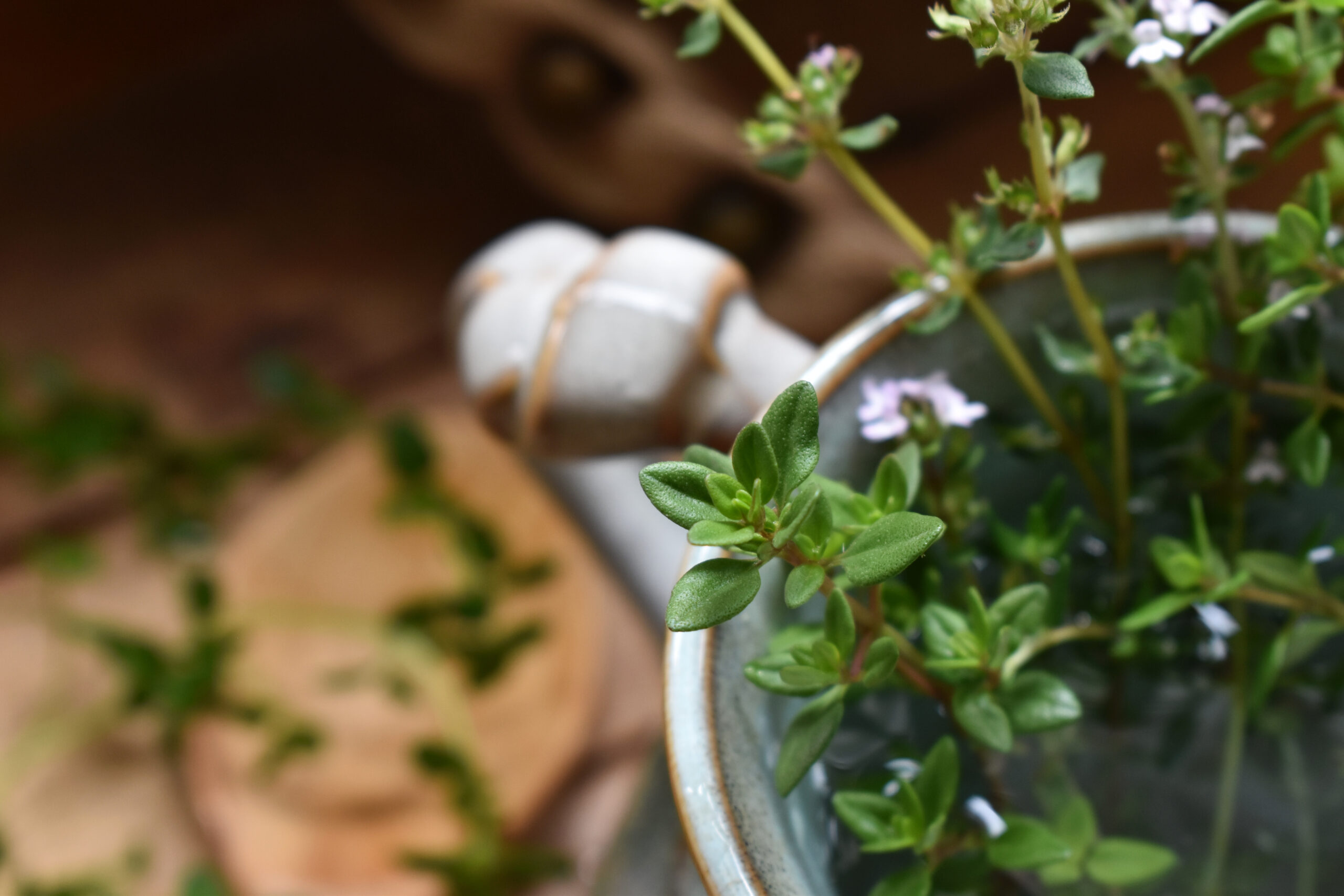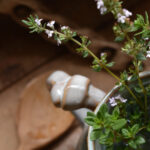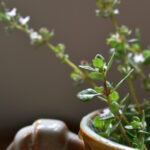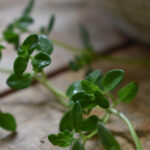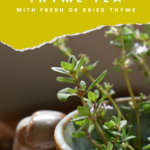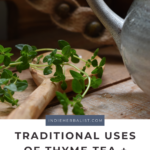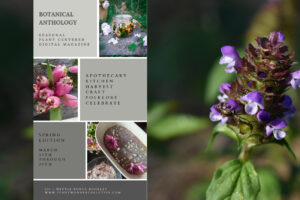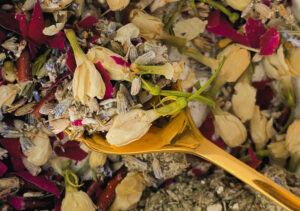Links contained in this post and elsewhere on my website may include affiliate links. When you make a purchase through these links, I earn a commission at no additional cost to you. I only link to products and services that I love - and that I think you will love, too!
Thyme (Thymus vulgaris) has a flavor profile that is bright, aromatic, and pungent. This herb makes a lovely beverage tea, but there are also traditional medicinal benefits associated with thyme that make it a great choice to keep on hand. Read on to learn the uses of thyme tea and how to make your own from fresh or dried leaves!
Traditional uses of thyme tea
The Lamiaceae plant family contains many aromatic herbs like mint and sage, and thyme belongs to this family as well. Like other mint-family plants, thyme is versatile and hardy, earning it a place in many folk herbalism traditions as well as more developed traditional medicine systems.
This herb is prized for its ability to support the lungs during viral and bacterial challenges and is often included in traditional recipes for cough syrups and winter teas. Additionally, it is a good herb to consider when recovering from illness. In King’s American Dispensatory (1898), Felter and Lloyd have this to say about thyme:
“Thyme is tonic, carminative, emmenagogue, and antispasmodic. The cold infusion is useful in dyspepsia, with weak and irritable stomach, and as a stimulating tonic in convalescence from exhausting diseases.”
Kings American Dispensatory (1898)
Traditionally, thyme is also valued as a:
- Soothing tea for sore throats
- Gentle, calming herbal tea to support the nervous system
- Astringent herb to assist with pediatric diarrhea and bedwetting (Hoffman, 2003)
- Supporting herb for healthy memory and cognitive function (McIntyre, 2019)
As a traditional cough remedy, thyme is beloved for its ability to help the body eliminate phlegm and to calm spasmodic coughing fits.
Ways to use thyme tea topically
Of course, herbal teas are also very useful topically! Thyme is very good at supporting skin and oral health.
Topically, thyme works as an antiseptic for wound healing and as a fomentation or oil for joint and muscle pain. According to herbalist Kerry Bone, it is also excellent in mouthwashes, for fungal skin conditions, and may also be helpful topically for herpes simplex virus type 2 (Bone, 2013).
When to avoid thyme tea
Thyme is usually considered a very safe herb, even for children and the elderly. However, it is classified as an emmenagogue and was traditionally used to help bring on menses, so it is best to avoid using it during pregnancy.
Thyme tea from fresh thyme
If you have a thyme plant in your garden, making fresh thyme tea is very simple! Your local grocery store may also carry fresh thyme in the produce department.
Harvest your fresh thyme directly before and during flowering for the most potent tea. This is also the best time to harvest thyme to dry for later.
Ingredients
- 1 tablespoon of freshly chopped thyme
- 1 cup boiling water
How to make it
- Strip leaves from several stems of fresh thyme. You may skip this step if the stems are still young and green.
- Finely chop the thyme leaves.
- Bring one cup of water to boil, covered, in an enamel saucepan.
- Turn off the heat and add one tablespoon of the chopped fresh thyme to the water in the saucepan.
- Cover and let the thyme steep in the hot water for 10 minutes.
Dried thyme tea
Dried thyme is available in the spice aisle at most grocery stores. However, growing and drying your own, or buying from an herbal supplier, will give you better results.
- 2 tsp cut and sifted dried thyme
- 1 cup boiling water
- Bring one cup of water to boil, covered, in an enamel saucepan.
- Add two teaspoons of dried cut-and-sifted thyme to the water in the saucepan.
- Turn off the heat and add one tablespoon of the chopped fresh thyme to the water in the saucepan.
- Cover and let the thyme steep in the hot water for 10 minutes.
More recipes with Thyme
Thyme tea is a pleasant herbal tea to enjoy any time of day, but it is also a reliable herb in a number of other preparations. Extracts, syrups, and infused honeys are other great ways to use thyme.
If you’re looking for more inspiration, learn how to make an easy thyme and garlic infused honey for supporting healthy lungs.
References
McIntyre, A. (2019). The complete herbal tutor: The definitive guide to the principles and practices of herbal medicine. Aeon Books.
Hoffman, D. (2003). Medical Herbalism: the science and practice of herbal medicine. Healing Arts Press.
Bone, K.; Mills, S. (2013) Priniciples and practice of phytotherapy: modern herbal medicine. Churchill Livingstone Elsevier.
